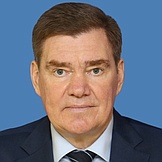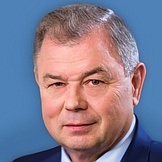Regional flags and emblems


Profile
Established 5 July 1944
Capital Kaluga
The Kaluga Region is part of the Central Federal District
Area 29,800 sq km
Population 1 064 700 (2025)
Ethnic groups
(2020 National Census, %)
Russian – 90,35
Tajik – 1,87
Armenian – 1,25
Uzbek – 1,20
Other – 5,33
Administrative divisions (2024)
Municipal districts – 24
City districts – 2
Rural towns – 26
Rural districts – 252
Geography and climate
The region is located in the central East European Plain. The terrain is mostly hilly, with some flat plains, dissected by river valleys, gullies, and ravines. In the west and northwest is the Smolensk Elevation (up to 279 m), in the east is the Central Russian Elevation. The region extends over 220 km from north to south and about 220 km from east to west.
The region borders on the Bryansk, Smolensk, Moscow, Tula, and Oryol regions and the city of Moscow.
There are 2,045 rivers, 17 water reservoirs, some of the largest are the Lyudinovskoye, Kirovskoye-Verkhneye, Brynskoye Yachenskoye, Milyatinskoye, and Slobodskoye, and 47 ponds. The major rivers are the Oka, Ugra, Zhizdra, and Bolva.
The climate is temperate continental. January temperatures average –4.1°C. July temperatures average 17.9°C. Average precipitation in January is 50 mm and 66 mm in July. The vegetation period is between 177 and 184 days
The Kaluga Region is home to the Kaluzhskiye Zaseki Reserve, Ugra National Park, the Tarusa Nature Reserve and the Kaluzhskiy Bor Nature Reserve.
Government
The legislative branch in the Kaluga Region is represented by the Kaluga Region Legislative Assembly, which is the permanent, representative and only body of legislative authority in the region.
The Legislative Assembly consists of 40 deputies, of which 20 are elected in single-member constituencies, and the remaining 20 in the single electoral district in proportion to the number of votes cast for lists of candidates nominated by electoral associations. The current Legislative Assembly was elected in September 2020, its term ends in September 2025.
The system of executive bodies of the Kaluga Region includes the Governor of the Kaluga Region, the Government of the Kaluga Region, and other bodies of executive authority. The Government of the Kaluga Region is the permanent supreme executive body of state power in the region, which operates on the basis of collegial decision-making.
The Governor of the Kaluga Region is the region’s highest-ranking official, who runs the executive branch in the region and directly heads the Government of the Kaluga Region. He is elected for five years by Russian citizens who permanently reside in the region. The incumbent Governor’s term ends in September 2025.
Economy and natural resources
Industrial output (manufacturing, wholesale and retail trade, construction, agriculture, transport and communications) accounts for about 40 percent of the region’s GDP. Over 25 percent of the economically active population is employed in industrial sectors.
The lack of local raw materials led to the development of machine-building and the metals sector. Machine-building enterprises form the core of the region’s industrial capacity. Other important sectors include food, construction materials, petrochemicals and pharmaceutical sectors. Agriculture accounts for 6 percent of GDP for the region, which is self-sufficient in potatoes, milk and vegetables. Local farms are focused on dairy and beef cattle breeding, grain and pulse crops, potatoes and vegetables grown indoors and outdoors.
The region is developing vital economic instruments like industrial parks and zones, regional development institutes and clusters, including 12 industrial parks, the Kaluga Special Industrial Economic Zone and the Sosensky Priority Social and Economic Development Area, with the necessary industrial development areas and infrastructure. Clusters offer conditions for the development of major producers, which are creating effective technological links with increasingly more small and medium-sized companies.
The main factors in the successful development of the region’s tourism sector are the short distance to Moscow and numerous historical, spiritual, educational and entertainment sites.
Culture and tourism
The region’s famous Orthodox shrines attract a great number of tourists. These include the Optina Pustyn (in Kozelsk), the Pafnutyev Borovsky Monastery (in Borovsk), the Tikhonova Pustyn (village of Leo Tolstoy, the Dzerzhinsky District), the Shamordino Monastery (village of Shamordino in the Kozelsk District), the Spas-on-Ugra (village of Spas, near Kaluga).
There are three theatres, a regional philharmonic hall, over 30 museums, some 450 cultural and recreation facilities, and 480 libraries in the region.
The city of Kaluga is home to the world's first and Russia’s largest Space Exploration History Museum.
Tarusa, a small town on the banks of the Oka, is known as the region’s cultural capital. Some of Russia’s most prominent artists, musicians, poets and writers have lived and worked here, including Marina Tsvetaeva, Nikolai Zabolotsky, Vasily Polenov, Vasily Vatagin, Svyatoslav Richter, and Konstantin Paustovsky. The scenic river tour from Tarusa to Polenovo along the Oka is one of the most popular summer attractions in the Kaluga Region.
Some of the most popular ecotourism venues are the Kaluzhskiye Zaseki Reserve, the art park near the village of Nikola-Lenivets, and Ugra National Park and Reserve. In addition to the rich flora and fauna, the park is also home to about 300 historical and cultural heritage sites that include archaeological sites, churches and monasteries, noble estates, ancient roads, and famous battle sites.
The region is home to one of the country's largest ethnographic park-museums, ETNOMIR, which is a tourism cluster and a cultural and educational center. Throughout the year, it hosts workshops, excursions, festivals and celebrations that showcase the beauty and diversity of the cultures of the peoples of Russia and the world.


